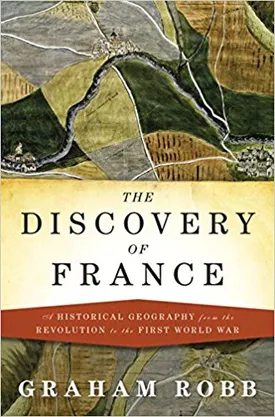The Discovery of France: A Historical Geography from the Revolution to the First World War by Graham Robb
The Discovery of France: A Historical Geography from the Revolution to the First World War by Graham Robb is a book that explores the history and culture of France through the lens of geography. Robb examines the bi-directional influences of the physical environment and human choices throughout the tumultuous era of the French Revolution and the birth of the Third Republic. Through his research, he offers readers insight into the transformation of the French landscape, the evolving political structure, and the stories of the people who lived through it all.
The story begins with the French Revolution and its impact on the country's geography. As Robb puts it, the "year 1789 proved to be the pivot of a century-long transformation of the geography and physical environment of France." It was during the revolutionary period that sweeping changes to the landscape began to take root. Robb notes that new roads were built, canals dug, and industrial machinery erected. As France pushed forward with the development of its infrastructure, the effects of war and the rise of Napoleon created further changes to the landscape. With the fall of Napoleon, the Third Republic and "the 'discovery' of France" began in earnest.
Robb's work chronicles the many changes that occurred throughout the course of this period of discovery. He covers various aspects of geography, from the construction of towns and cities to changes in topography and land use. He also delves into the impact of science and technology, pointing to the invention of the railroad and its ability to speed up the movement of people and goods. He also emphasizes how new forms of communication and transportation helped to create a more connected and interdependent population.
In addition to exploring the physical geography of France, Robb also looks at the cultural geography of the country. He examines how the shaping of sovereignty and the emergence of a new national identity impacted the nation’s borders and the spread of ideas and culture. He also delves into the many stories of people who lived during the period of the Discovery of France and the unique ways in which they helped to shape the country we know today.
Ultimately, Robb's work reveals the complexity and diversity of the geography, culture, and history of France in the period between the Revolution and the First World War. He succeeds in presenting an interesting and accessible account of a large and important time period for the country. By furthering our understanding of how France developed and how it changed over time, Robb's work provides an invaluable contribution to the fields of geography and history.

